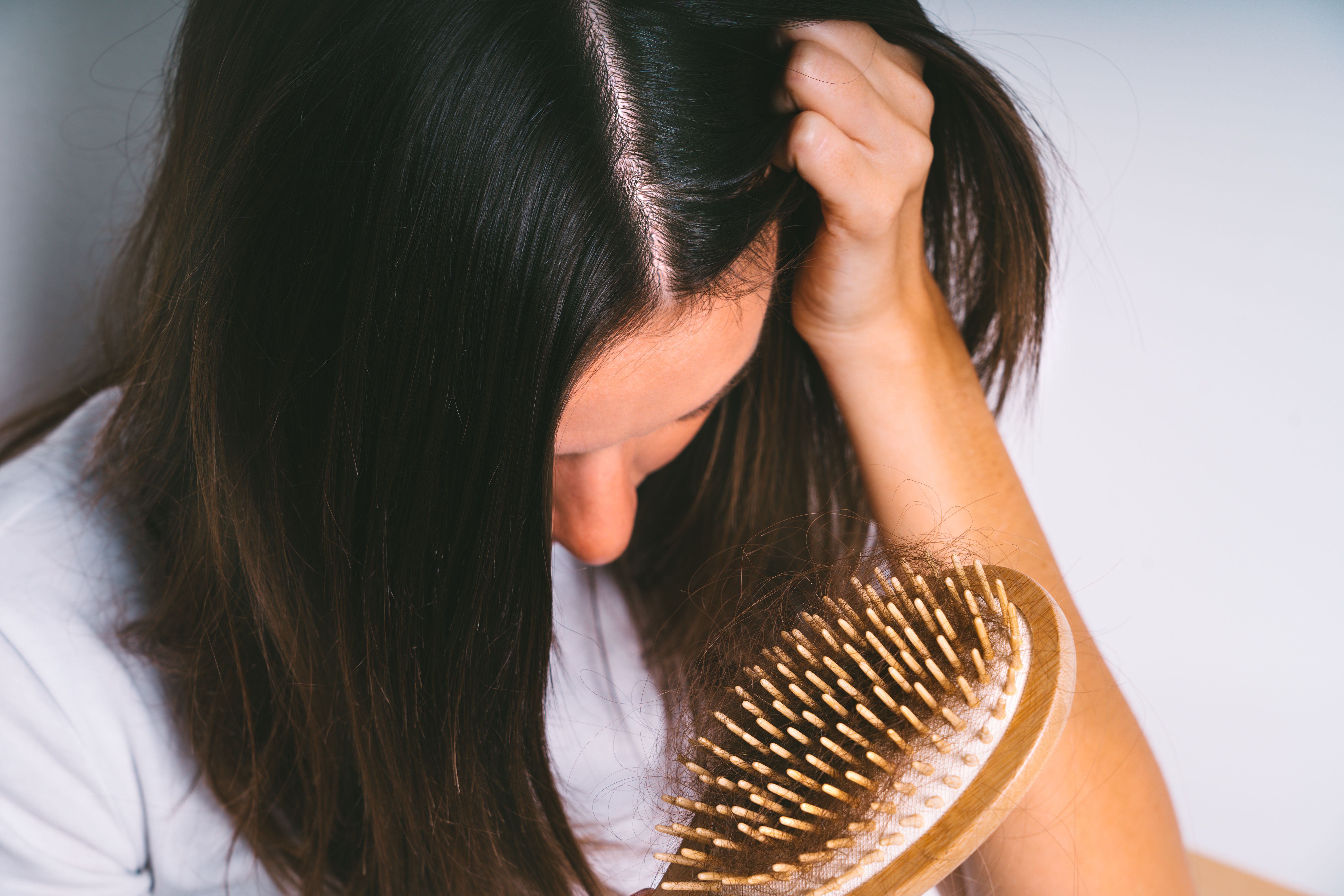- Center on Health Equity & Access
- Clinical
- Health Care Cost
- Health Care Delivery
- Insurance
- Policy
- Technology
- Value-Based Care
Severe AA Impairs Quality of Life, Study Calls for Holistic Management Strategies
A survey study found a strong association between severe alopecia areata (AA) and significant impairments in quality of life and mental wellbeing, highlighting the need for comprehensive treatment addressing both physical and emotional aspects of the disease.
Woman with hair loss | Image Credit: Creative Cat Studio - stock.adobe.com

Patients with severe alopecia areata (AA) have greater incidences of impaired quality of life (QOL) and psychological well-being burdens, acknowledging the significance of comprehensive disease management strategies that recognize physical and psychosocial aspects of the condition.
Internet panels recruited participants across 11 countries and 3 continents, ranging from February 2023 to April 2023 in a large multinational cross-sectional AA Patient Satisfaction and Unmet Need Survey. None of the participants had previously received Janus kinase (JAK) inhibitors for treatment of AA or any other condition.
A multinational survey included 747 adults with self-reported severe AA from 11 countries. Just over half were women (55.3%), with an average age of 43.8 years.
At baseline, the majority of the participants had current scalp hair loss either equal to or more than 50% (87.4%). There were also moderate to severe levels of eyebrow, eyelash, stubble/beard, and body hair loss reported by 46.9%, 48.7%, 61.5%, and 73.2% of participants, respectively. Some participants reported moderate to severe eye irritation and nail symptoms in 44.9% and 41.8% of participants, respectively.
Women older than 50 years with disease duration of more than 4 years had more severe AA signs and symptoms compared with other groups. Men were more likely to have less than 50% scalp hair loss (57.5%) than women, who were more likely to have greater than 50% hair loss (57.6%).
Almost half of the surveyed participants confirmed they had a former or current medical diagnosis of anxiety, depression, and/or insomnia (47.3%). Anxiety was detected mainly in participants with less than 50% scalp hair loss (34%) while insomnia was common in those with more than 95% scalp hair loss (32.1%).
Disease burden and psychosocial impact were measured in participants using the Dermatology Life Quality Index (DLQI). The average DLQI for the total population was 16.8 and reportedly 86.2% of participants had severe QOL impairments (DLQI > 10). Patients with AA who received treatment had greater impacts on mental health/mood (55.8%). Close to half of the respondents noted substantial impacts in almost all daily aspects of their lives, except for religious identity.
Many participants (79.9%) reported negative long-term effects from AA, including decreased self-esteem, mental health problems, and issues with daily activities. Women were more impacted than men, but both groups had a large majority with severely impaired QOL.
Patients with AA with over 4 years of experience reported better QOL than those with shorter durations. Less scalp hair loss was also correlated with lower DLQI. No clear trends emerged for long-term impacts within hair loss categories.
A survey on coping with AA found talking to others and exercise were most common. Women were more likely to use social support and appearance-focused coping mechanisms, while those with less hair loss used makeup and concealers more.
The ages of participants altered their responses to coping mechanisms because a larger percentage of participants over 50 years reported talking in person to others as their main coping mechanism while participants younger than 40 years were more likely to exercise, engage in sport, or get involved in religious or patient organizations. Disease duration also impacted patient coping skills because participants with more than 4 years since diagnosis reported not using coping strategies compared with other groups but still used exercise to cope.
Women sought more information than men, especially regarding online support (34.4% vs 26.6%) and treatment risks/benefits (36.1% vs 26.3%). Overall, the most requested information was on realistic treatment expectations (39.1%), followed by AA/mental health (37.5%) and prescriptions (34.0%). Younger patients preferred AA info, while older ones wanted info on prescriptions. Those with a recent diagnosis were most likely to seek information.
The survey design introduces bias because the cross-sectional nature prevents causal conclusions. Self-reported data, uneven sample distribution, and exclusion criteria further limit interpretations. Additionally, some survey questions may not be relevant to AA, and the impact of specific medications is unclear.
The significant impacts severe AA has on QOL, and mental wellbeing highlights the need for a holistic approach to managing the disease, incorporating not just treatment for hair loss but also addressing the significant emotional and social burdens experienced by patients. Further research is needed to explore the most effective strategies for comprehensive AA management.
Reference
Bewley A, Figueras-Nart I, Zhang J, et al. Patient-reported burden of severe alopecia areata: First results from the multinational alopecia areata unmet need survey. Clin Cosmet Investig Dermatol. 2024;17:751-761. doi:10.2147/ccid.s445646
The Breakdown: Breast Cancer Research Awareness Day
August 19th 2025Breast cancer is the second most common cancer among women and the second leading cause of cancer-related deaths among women in the US. In light of Breast Cancer Research Awareness Day, The American Journal of Managed Care® breaks down the most recent advancements in breast cancer prevention, screening, and therapies.
Listen
